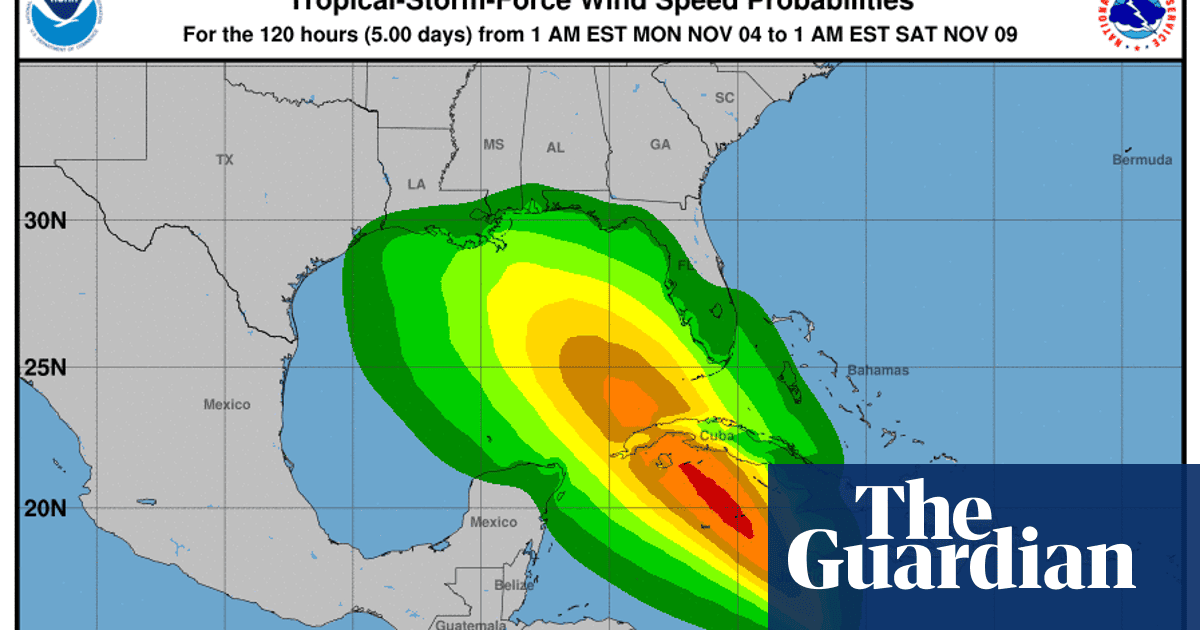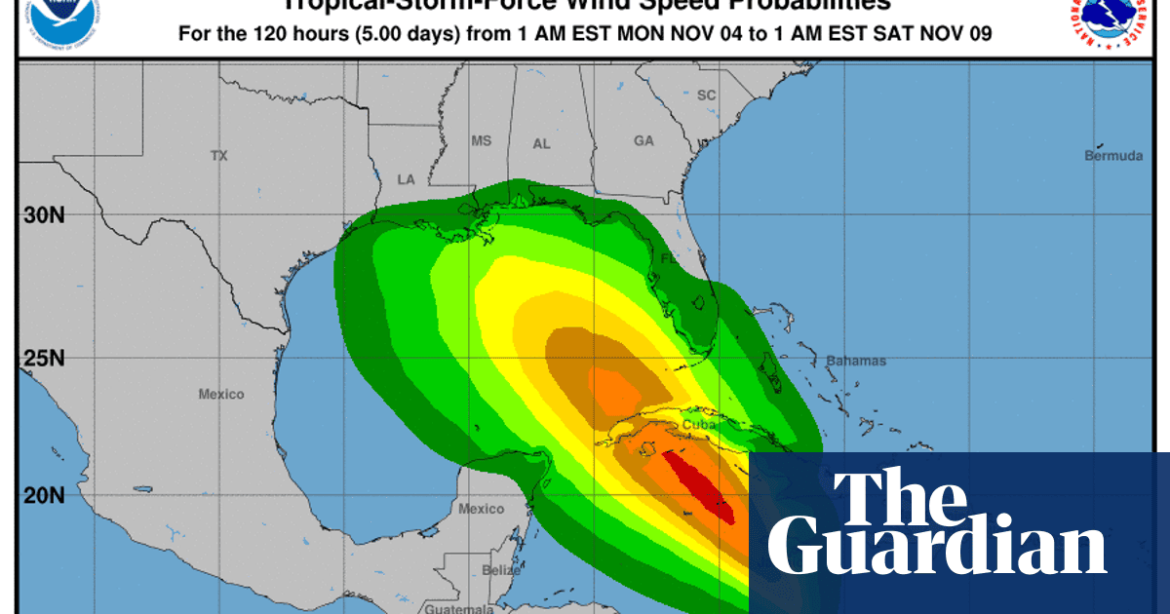
Forecasters posted a hurricane warning in the Caribbean on Monday afternoon after a late-season disturbance south of Cuba strengthened into Tropical Storm Rafael and set its sights on the US Gulf coast.
The 17th named storm of an overactive Atlantic hurricane season will bring heavy rain to Jamaica and the Cayman Islands before strengthening to a hurricane and probably hitting Cuba, the Miami-based National Hurricane Center (NHC) said.
Forecasters are predicting that it will bring heavy rainfall to parts of the US along the Gulf of Mexico, with longer-range projections showing the Louisiana coast, including New Orleans, and Mississippi in the so-called cone of concern.
A hurricane warning was in effect for the Cayman Islands, while Cuba was placed under a hurricane watch, and a tropical storm warning was posted for Jamaica.
By Monday afternoon, Rafael was about 175 miles (280km) south of Kingston, Jamaica, with maximum sustained winds of 45mph (72km/h), and moving north at 9mph.
The storm was expected to move near Jamaica by late Monday and be near or over the Cayman Islands late Tuesday into Wednesday at near hurricane strength.
While weather models suggest the center of the storm could eventually make landfall between Louisiana and the western edge of the Florida Panhandle, dry air and water temperatures in the 70s Fahrenheit could cause it to rapidly weaken as it moves north.
“It is too soon to determine what, if any, impacts Rafael could bring to portions of the northern Gulf coast. Residents in this area should regularly monitor updates to the forecast,” the NHC specialist Larry Kelly wrote in an afternoon update.
“Rafael will bring areas of heavy rain to portions of the western Caribbean, including Jamaica and Cuba through mid-week, where flooding and landslides are possible. Heavy rainfall will spread into Florida and adjacent areas of the south east US mid to late week.”
Kelly said totals of 3 to 6in and up to 9in were expected locally in Jamaica and parts of Cuba.
Annually, hurricane seasons are expected to last at least through 30 November. Hurricanes forming in the late stages of those seasons have been seen more often during the ongoing climate crisis, spurred primarily by the burning of fossil fuels.
Major hurricanes Helene in September, and Milton last month, followed similar paths across the Caribbean and strengthened significantly in the Gulf of Mexico before striking Florida’s west coast. Forecast models, however, show Rafael as a weaker storm veering away from Florida.
On the opposite side of the Atlantic Ocean, former Tropical Storm Patty dissipated into a post-tropical cyclone on Monday. Although no longer a tropical system, its remnants were forecast to bring heavy rainfall across portions of Portugal and western Spain.
The Associated Press contributed reporting
Source: theguardian.com



